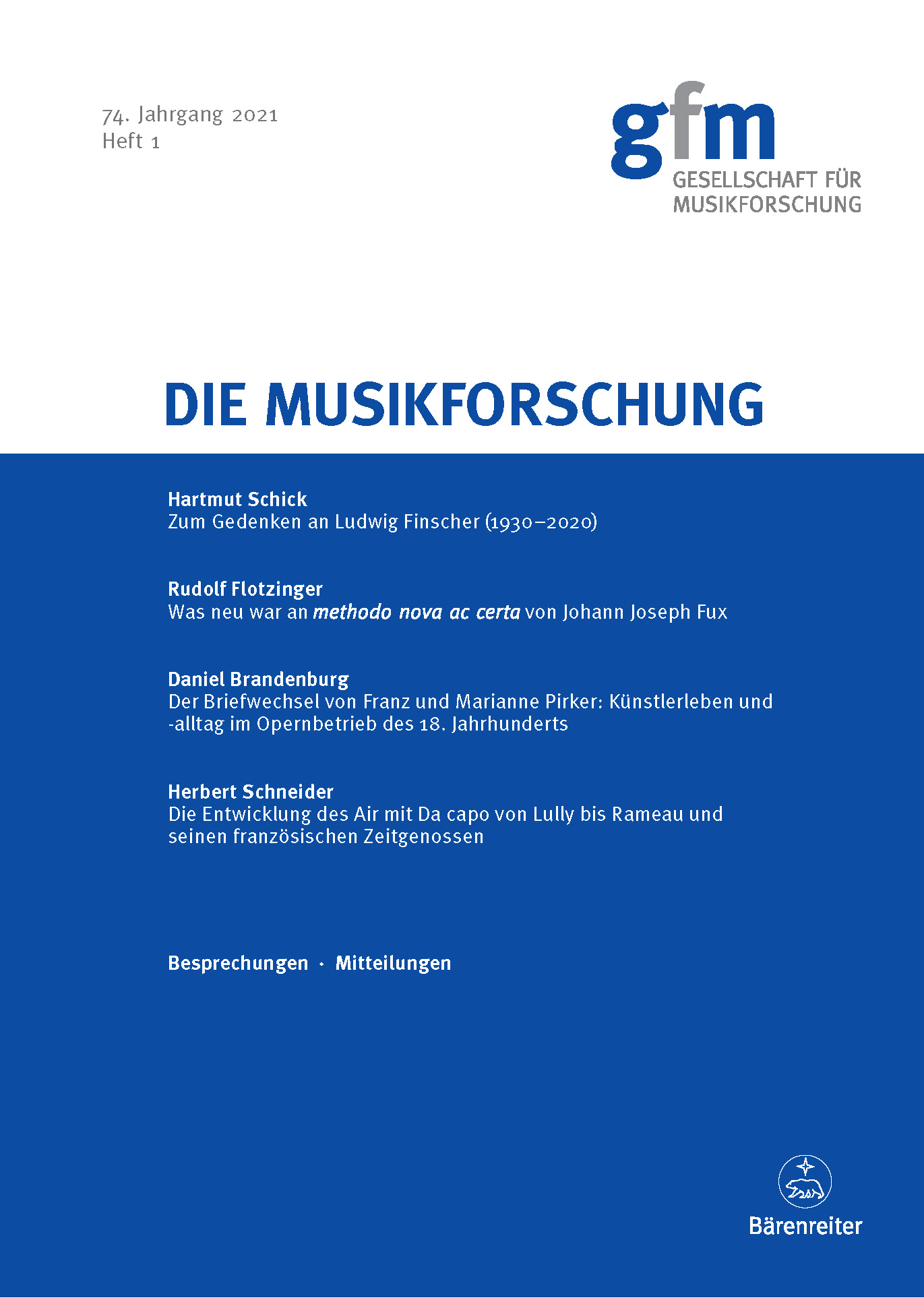Die Entwicklung des Air mit Da capo von Lully bis Rameau und seinen französischen Zeitgenossen
David Charlton zum 75. Geburtstag
DOI:
https://doi.org/10.52412/mf.2021.H1.2992Abstract
The starting-point is the rudimentary Italian aria with da capo, respectively with a frame, which surrounds a much longer central part. This type widely spread in the 17th century gets the main form of Quinault’s and Lully’s monologue (the other one is through-composed). It remains present in the Italian opera in a small quantity when the classical aria da capo has already been the main type of aria, whereas in France its number decreases much slower and gets rare in the 1750th. The French cantata imported from Italy blazes the trail for the classical da capo aria firstly in the opera-ballet, then in the divertissements of the tragédie lyrique in Italian, soon also in French and slowly also in arias with dramatic content and expression in all types of French music theatre. The aria with da capo and the classical da capo aria are examined in detail in operas of Rameau and his contemporaries, especially their individual solutions of text, musical forms and expression. Finally J.-J. Rousseau’s typology of the da capo aria is examined, verified and criticized. (Autor)






